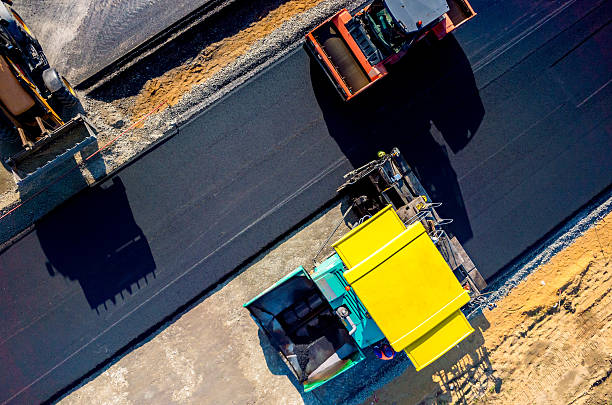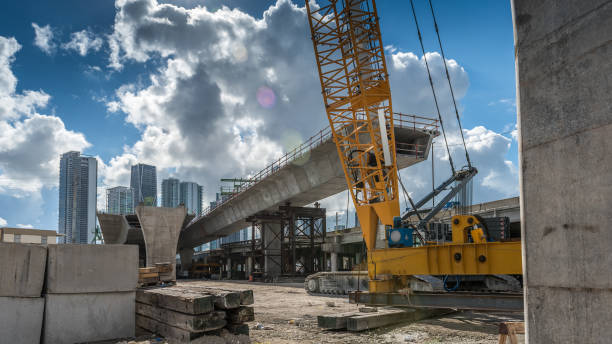Sustainable Road In our time of uplifted ecological cognizance, supportable arrangements are becoming basic across all areas. Among these, transportation framework stands apart as a pivotal region for development. Customary street development strategies have for quite some time been censured for their ecological effect, provoking a shift towards maintainable street innovation.Reasonable street innovation envelops a scope of eco-accommodating materials and plan standards pointed toward decreasing fossil fuel byproducts, limiting waste, and upgrading solidness. This shift is driven by the pressing need to battle environmental change, upgrade asset utilization, and work on the flexibility of street organizations.Past natural advantages, reasonable street innovation additionally offers monetary benefits, like long haul cost investment funds and occupation creation. Besides, by focusing on availability and security for all clients, these developments add to cultural prosperity.As we investigate the most recent progressions and applications in practical street innovation, obviously embracing these developments is fundamental for making a greener, stronger future for transportation foundation.
Importance of Sustainable Road Technology
Supportable street innovation assumes an essential part in current foundation improvement, tending to the developing worries of natural corruption, asset consumption, and environmental change. As the total populace proceeds to urbanize and vehicle proprietorship presses, transportation networks escalates. Economical street innovation offers inventive answers for relieve the unfriendly impacts of regular street development and upkeep rehearses. One huge perspective is the usage of reused materials, like recovered black-top asphalt (RAP) and reused substantial totals (RCA), which diminishes the interest for virgin assets as well as limits squander shipped off landfills. Furthermore, economical street advances focus on energy productivity by carrying out procedures like warm blend black-top (WMA) creation methods that lower energy utilization during assembling. These headways diminish ozone depleting substance outflows as well as abatement the general carbon impression of street foundation projects. Besides, manageable street advancements coordinate plans that upgrade the versatility of transportation frameworks against the effects of environmental change, for example, outrageous climate occasions and rising ocean levels.
For example, porous asphalts permit water to penetrate through the surface, diminishing stormwater spillover and limiting flooding chances. Additionally, integrating canny transportation frameworks (ITS) and environmentally friendly power sources like sun based controlled street signs and lighting add to upgrading street wellbeing while at the same time decreasing reliance on petroleum products.

Past ecological advantages, manageable street innovation additionally offers financial benefits by lessening life-cycle costs related with support and fix. By carrying out sturdy materials and imaginative development procedures, the recurrence of street restoration and substitution is altogether decreased, prompting long haul investment funds for state run administrations and citizens. Also, reasonable street foundation invigorates work creation and advances neighborhood monetary improvement through the development of green businesses, like reusing and sustainable power areas. By and large, the significance of maintainable street innovation couldn’t possibly be more significant in accomplishing an amicable harmony between foundation improvement and ecological stewardship. Embracing these progressions not just guarantees the life span and strength of transportation organizations yet additionally cultivates a manageable future for a long time into the future.
Pioneering Sustainable Road Technology
Spearheading Maintainable Street Innovation is something beyond a promise to diminishing ecological effect; it addresses an essential change in the manner we consider, develop, and keep up with our street organizations. At its center lies a commitment to development, searching out eco-accommodating arrangements and state of the art rehearses that limit fossil fuel byproducts as well as upgrade sturdiness and flexibility. This ethos drives an all encompassing way to deal with street foundation, one that incorporates maintainable materials, high level development procedures, and clever plan standards. From using reused materials and bio-based covers to carrying out energy-proficient lighting and savvy traffic the executives frameworks, the scene of maintainable street innovation is persistently developing. In addition, the quest for supportability reaches out past the underlying development stage, enveloping continuous upkeep and recovery endeavors pointed toward boosting the life expectancy of street resources while limiting natural effect. By embracing manageable street innovation, networks all over the planet can prepare for a future where transportation foundation fills in as a signal of natural stewardship and flexibility notwithstanding environmental change. As trailblazers in this field, we have the chance to drive development, motivate cooperation, and lead the charge towards a greener, more supportable transportation framework for a long time into the future.
How to make roads more sustainable
The most effective method to make streets more reasonable is a critical request in the present time of ecological cognizance and environment activity. Accomplishing manageability in street foundation includes a multi-layered approach that coordinates imaginative advancements, eco-accommodating materials, and comprehensive plan standards. One vital part of making streets more practical is diminishing their carbon impression. This can be achieved by streamlining development strategies to limit energy utilization and outflows, as well as integrating reused materials and bio-based fasteners that lessen the dependence on limited assets and petroleum derivatives. Moreover, taking on supportable asphalt configuration rehearses, like porous asphalts and cool asphalts, can assist with moderating the metropolitan intensity island impact, improve stormwater the board, and upgrade generally speaking natural flexibility.

Moreover, coordinating savvy innovations into street frameworks, like shrewd traffic the board frameworks and energy-productive lighting, can additionally upgrade maintainability by streamlining traffic stream, diminishing energy utilization, and limiting ecological effect. Besides, advancing elective methods of transportation, like cycling paths, passerby walkways, and public travel organizations, can assist with lessening dependence on single-inhabitance vehicles and alleviate blockage and air contamination. Putting resources into innovative work to investigate arising advances, for example, sun based streets and active energy gathering frameworks, holds guarantee for additional upgrading the manageability of street foundation. Cooperation among states, engineers, industry partners, and networks is fundamental to executing these economical street techniques actually. By focusing on manageability in street plan, development, and support, we can make transportation networks that address the issues of today as well as protect the planet for people in the future. As we proceed to develop and execute supportable practices, we have the potential chance to make ready towards a greener, stronger future for street framework and the networks it serves.
Sustainable road materials
Practical street materials exemplifies an essential part of current framework improvement, epitomizing a promise to natural stewardship and asset proficiency. In a time characterized by the pressing need to moderate environmental change and lessen fossil fuel byproducts, the selection of materials utilized in street development assumes an essential part in molding the supportability profile of transportation organizations. The mission for economical street materials is portrayed by a diverse methodology that includes both the determination of unrefined components and the improvement of inventive assembling processes. Reused totals, like squashed concrete and recovered black-top asphalt, stand as great representations of supportable choices that decrease the interest for virgin materials as well as redirect squander from landfills. Moreover, the reception of bio-based covers, for example, plant-inferred pitches and bio-black-top, offers an inexhaustible option in contrast to oil based items, further lessening the carbon impression of street development. Also, headways in material science have made ready for the advancement of novel composites and nanomaterials with improved sturdiness, strength, and versatility to ecological debasement.

These imaginative materials expand the life expectancy of street surfaces as well as limit the requirement for successive fixes and support, in this manner diminishing lifecycle costs and moderating assets. Besides, maintainable street materials are much of the time portrayed by their capacity to moderate the metropolitan intensity island impact, upgrade stormwater the board, and further develop in general air quality, in this way adding to the making of better and more decent networks. As the interest for reasonable foundation keeps on developing, so too does the significance of focusing on the turn of events and reception of harmless to the ecosystem street materials. By embracing feasible street materials, policymakers, specialists, and partners can prepare for a future where transportation networks are effective and tough as well as one with the common habitat. As we proceed to enhance and team up in this basic undertaking, we have the chance to fabricate a more economical world for a long time into the future.
Innovations in road technology
Developments in street innovation envoy an extraordinary period in transportation foundation, described by notable progressions pointed toward improving supportability, productivity, and wellbeing. At the cutting edge of this advancement are innovations that upset the manner in which we configuration, build, and keep up with streets. One such advancement is the usage of reused materials, like recovered black-top asphalt and reused substantial totals, which not just decrease the ecological impression of street development yet additionally limit waste and ration regular assets. Besides, the mix of shrewd advances, for example, sensors and information investigation, empowers continuous observing of street conditions, traffic stream, and foundation execution, working with proactive support and enhancing asset designation. Also, the improvement of self-recuperating materials and imaginative asphalt plans, for example, penetrable asphalts and rubber treated black-top, upgrades sturdiness and strength while moderating the effects of environmental change, like flooding and outrageous temperatures.
Additionally, headways in elective energy sources, for example, sun based streets and dynamic energy gathering frameworks, offer promising roads for decreasing dependence on petroleum products and driving helper street highlights, like lighting and signage. Besides, the appearance of associated and independent vehicles presents valuable chances to further develop street security and proficiency through improved correspondence and coordination among vehicles and framework. As we keep on pushing the limits of development in street innovation, joint effort among state run administrations, industry partners, and exploration foundations is urgent to saddling the maximum capacity of these headways and guaranteeing their far reaching reception. By embracing advancements in street innovation, we can make transportation networks that are more reasonable and strong as well as more secure, more effective, and better prepared to meet the developing necessities of society. As we plan ahead, the opportunities for development in street innovation are boundless, offering energizing possibilities for molding the framework of tomorrow.

How does technology affect sustainability negatively
Innovation, while frequently praised for its capability to drive supportability forward, can likewise adversely affect ecological and social manageability. One critical disadvantage is the peculiarity of innovative outdated nature, where quick headways lead to the untimely removal of as yet working gadgets, adding to electronic waste (e-squander) gathering. The assembling and removal of electronic gadgets require critical energy and assets, prompting ecological debasement and asset consumption. Additionally, the extraction of uncommon earth metals, fundamental parts in numerous advanced advances, frequently includes naturally damaging practices and denials of basic freedoms. Moreover, the multiplication of computerized advances and online administrations has prompted a flood in energy utilization, essentially from server farms and server ranches, adding to ozone harming substance discharges and compounding environmental change. Besides, the computerized partition, the hole between those with admittance to innovation and those without, can compound existing social disparities, restricting open doors for schooling, business, and community investment. Additionally, the quick speed of mechanical development can overwhelm administrative systems, prompting potentially negative results and moral problems, like protection infringement and observation. Generally, while innovation can possibly drive manageability, its adverse consequences highlight the significance of basically evaluating its execution and cultivating a more comprehensive way to deal with mechanical improvement that focuses on ecological and social prosperity.

Gamification’s Impact in education(2024)